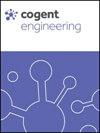An explainable multi-class decision support framework to predict COVID-19 prognosis utilizing biomarkers
IF 2.5
Q2 ENGINEERING, MULTIDISCIPLINARY
引用次数: 0
Abstract
Millions of lives have been impacted by COVID-19, which has spread rapidly. Several vaccines have been developed to curb the severe prognosis induced by the virus. However, a part of the population (elderly and patients with coexisting conditions) is still at risk. It is crucial to identify these patients early since appropriate treatments can be provided to them to prevent the onset of severe symptoms such as breathlessness and hypoxia. Hence, this study utilizes machine learning and explainable artificial intelligence (XAI) to predict COVID-19 severity using biochemical, haematological and inflammatory markers. The patients are grouped into three classes: mild, moderate and severe. Four nature-inspired techniques have been utilized to select the best markers. The final stacked model obtained a maximum accuracy of 84. Demystifying the models has been done using four XAI techniques, including Shapley additive values (SHAP) and Local Interpretable Model-Agnostic Explanations (LIME). Lactate dehydrogenase (LDH), albumin, D-Dimer, c-reactive protein (CRP) and lymphocytes were considered important, according to them. The classifiers can be utilized as a prognostic decision support framework to aid the medical personnel in classifying COVID-19 patients.利用生物标志物预测COVID-19预后的可解释的多类别决策支持框架
COVID-19迅速蔓延,数百万人的生活受到了影响。已经开发了几种疫苗来抑制病毒引起的严重预后。然而,一部分人口(老年人和患有共存疾病的患者)仍然处于危险之中。早期识别这些患者是至关重要的,因为可以向他们提供适当的治疗,以防止出现呼吸困难和缺氧等严重症状。因此,本研究利用机器学习和可解释人工智能(XAI),利用生化、血液学和炎症标志物预测COVID-19的严重程度。患者分为轻、中、重度三个级别。四种自然启发的技术被用来选择最好的标记。最终叠加模型的最大精度为84。通过使用四种XAI技术,包括Shapley加值(SHAP)和局部可解释模型不可知论解释(LIME),来揭开模型的神秘面纱。他们认为乳酸脱氢酶(LDH)、白蛋白、d -二聚体、c反应蛋白(CRP)和淋巴细胞是重要的。分类器可作为预后决策支持框架,帮助医务人员对COVID-19患者进行分类。
本文章由计算机程序翻译,如有差异,请以英文原文为准。
求助全文
约1分钟内获得全文
求助全文
来源期刊

Cogent Engineering
ENGINEERING, MULTIDISCIPLINARY-
CiteScore
4.00
自引率
5.30%
发文量
213
审稿时长
13 weeks
期刊介绍:
One of the largest, multidisciplinary open access engineering journals of peer-reviewed research, Cogent Engineering, part of the Taylor & Francis Group, covers all areas of engineering and technology, from chemical engineering to computer science, and mechanical to materials engineering. Cogent Engineering encourages interdisciplinary research and also accepts negative results, software article, replication studies and reviews.
 求助内容:
求助内容: 应助结果提醒方式:
应助结果提醒方式:


